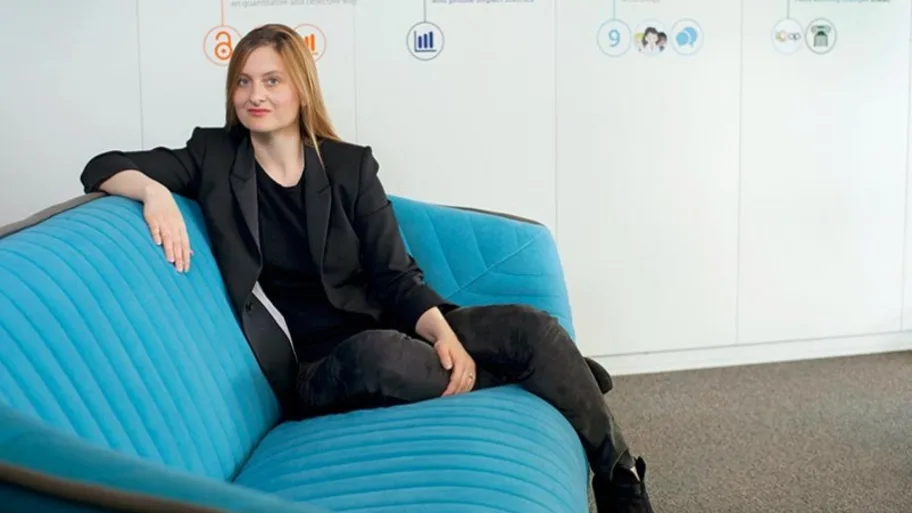
Kamila Markram Chercheuse en neurosciences, cofondatrice et CEO de Frontiers, 40 ans
Kamila Markram Chercheuse en neurosciences, cofondatrice et CEO de Frontiers, 40 ans
© Fabio Massimo Aceto
On World Autism Awareness Day (April 2) we present a selection of popular open-access articles on advances and theories into autism spectrum disorders (ASD)
The Intense World Theory – a unifying theory of the neurobiology of autism
Frontiers in Human Neuroscience
(Kamila Markram and Henry Markram (Co-founders of Frontiers and CEO and Editor-in-Chief, respectively))
The Intense World Theory considers autism as the consequence of a supercharged brain that makes the world more intense, which causes people with autism to develop strategies to cope. This review highlights key studies that support this theory and show how it can better explain past findings, and how it could resolve apparently conflicting data and interpretations.
Autism: The Micro-Movement Perspective
Frontiers in Integrative Neuroscience
(Elizabeth B Torres, Maria Brincker, Robert W Isenhower, Polina Yanovich, Kimberly A Stigler, John I Nurnberger, Dimitri N Metaxas and Jorge V Jose)
A new screening and tracking tool for diagnosing autism is detailed in this study. It measures an autistic person’s random movements and compares these to patterns seen in non-autistic individuals. The method could be used to diagnose autism sooner and allow earlier intervention.
Network efficiency in autism spectrum disorder and its relation to brain overgrowth
Frontiers in Human Neuroscience
(John D Lewis, Rebecca Theilmann, Jeanne Townsend and Alan Evans)
In the early years of life, children with autism spectrum disorder (ASD) go through abnormally rapid brain growth. Recent computational modelling of the brain reveals inefficiencies in internal communication caused by this growth that could result in ASD symptoms.
Frontiers in Integrative Neuroscience
(Joseph P. McCleery, Natasha A. Elliott, Dimitrios S. Sampanis and Chrysi A. Stefanidou)
In this paper, the evidence is reviewed for delayed, impaired, and atypical motor development in autistic infants and children, and the effectiveness of intervention strategies used to improve communicative abilities.
Identification of neural connectivity signatures of autism using machine learning
Frontiers in Human Neuroscience
(Gopikrishna Deshpande, Lauren E. Libero, Karthik R. Sreenivasan, Hrishikesh D. Deshpande and Rajesh K. Kana)
An fMRI scanner was used to measure the brain activity of volunteers with ASD and compared to a control group. The comparisons revealed disrupted brain connectivity that could serve as a neural signature of autism.
Frontiers in Public Health
(Richard E. Frye*, Daniel Rossignol, Manuel F. Casanova, Gregory L. Brown, Victoria Martin, Stephen Edelson, Robert Coben, Jeffrey Lewine, John C. Slattery, Chrystal Lau, Paul Hardy, S. Hossein Fatemi, Timothy D. Folsom, Derrick MacFabe and James B. Adams)
Current pharmacological and non-pharmacological treatments of epilepsy in children with ASD and epilepsy are covered in this review. It highlights the lack of controlled trials, which has hindered the development of more efficient treatment strategies.
Autism: The Movement Perspective
Frontiers in Integrative Neuroscience (Research Topic)
(Topic editors: Elizabeth B. Torres and Anne M. Donnellan)
This special collection of papers presents evidence that significant movement and sensory differences exist in ASD that can be characterized in a way that complements new behavioral treatments. The measurement and analysis of these differences could offer an advantage over observational and subjective measures currently used to diagnose autism.
April 02, 2014
Editor


Get the latest research updates, subscribe to our newsletter